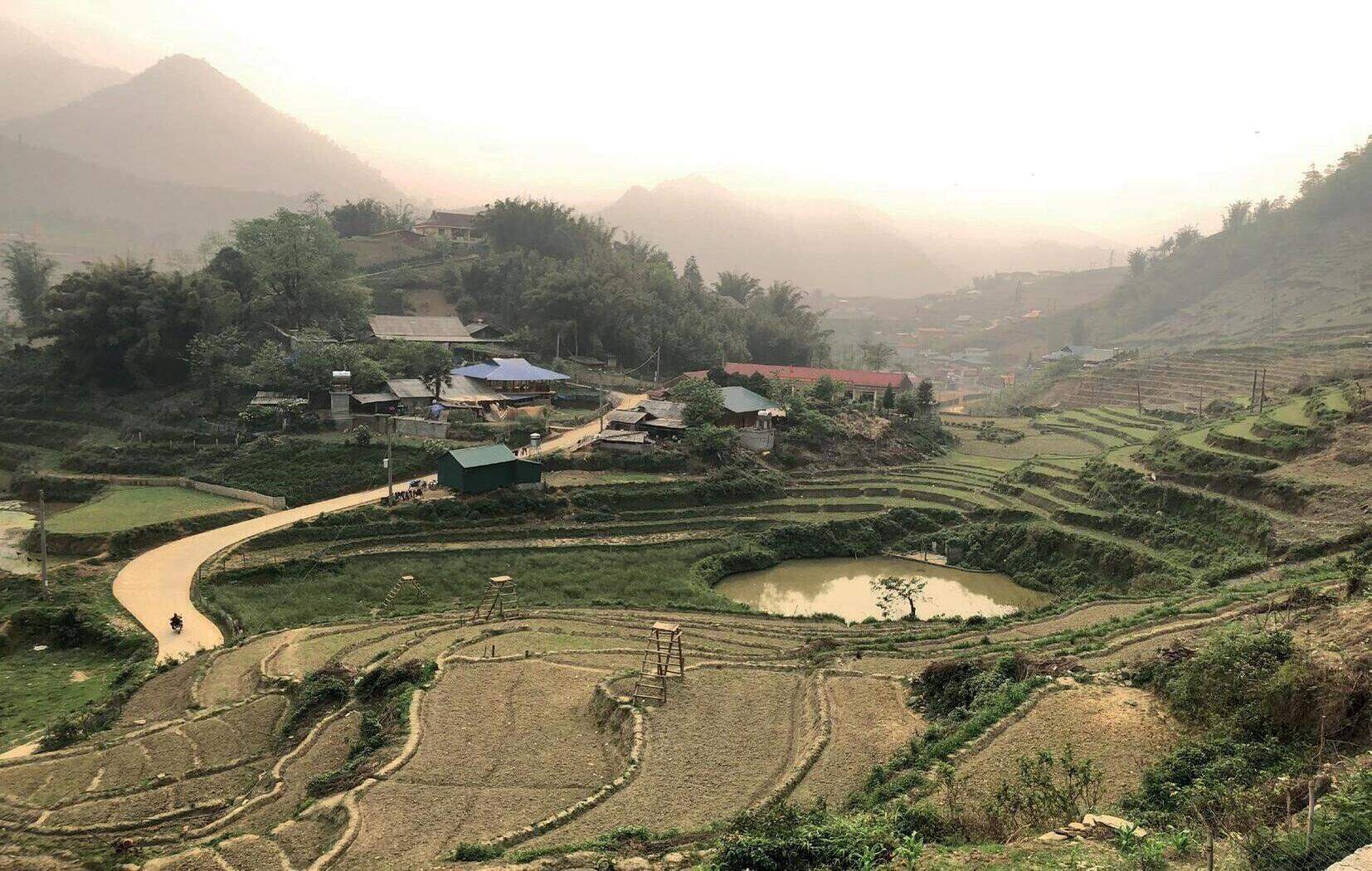
The world is filled with fascinating geographical phenomena, and one of the most intriguing is the presence of shatter belts. Shatter belts are unique regions characterized by complex political, cultural, and social dynamics that can often be volatile and unpredictable. These areas serve as a melting pot of different ethnicities, languages, and historical influences, creating a unique tapestry of diversity.
In this article, we will delve into 13 unbelievable facts about shatter belts that will capture your imagination and open your eyes to the intricate nature of these regions. From their historical significance to the challenges they face in the present day, shatter belts provide a wealth of knowledge and insight into the human condition.
So, fasten your seatbelts and prepare to embark on a journey through the captivating world of shatter belts. Get ready to be amazed by the incredible stories, diverse cultures, and ever-changing landscapes that make these regions so fascinating.
Key Takeaways:
- Shatter belts are regions of intense conflict and instability, often fueled by ethnic, religious, and political tensions. They have a profound impact on global politics and require complex solutions for stability.
- Shatter belts drive forced migration, hinder economic growth, and pose security threats. Efforts to promote stability involve addressing root causes, fostering inclusive governance, and long-term development strategies.
Shatter Belts: A Geopolitical Phenomenon
Shatter belts, also known as “zones of persistent geopolitical instability,” encompass regions characterized by intense ethnic, religious, and political conflicts. These areas are often subject to frequent border changes, territorial disputes, and power struggles among competing groups. The term “shatter belts” was coined by the geographer Isaiah Bowman in the early 20th century. Shatter belts pose significant challenges to regional stability and have a profound impact on global politics.
The Origins of Shatter Belts
The origins of shatter belts can be traced back to historical events such as decolonization, the breakup of empires, and the Cold War. The dissolution of colonial empires led to the emergence of new states with diverse ethnic and religious backgrounds, often lacking strong central governance. Additionally, the ideological rivalries between the Soviet Union and the United States during the Cold War fueled proxy wars and insurgencies within these regions.
Shatter Belts as Crossroads of Cultures
Shatter belts often serve as crossroads of cultures, where different civilizations and ethnic groups collide. This cultural diversity can be a source of richness, but it can also lead to tensions and conflicts. The clash of religious, linguistic, and ethnic identities within these areas contributes to the instability and volatility that characterizes shatter belts.
Shatter Belts and Resource Contention
Many shatter belts are located in resource-rich areas, leading to competition and conflict over valuable natural resources. Oil, gas, minerals, and water are often major points of contention, with competing groups vying for control over these resources. This resource-driven competition exacerbates political and ethnic tensions, further destabilizing the region.
The Balkans: A Classic Example of Shatter Belt
The Balkans, including countries like Bosnia and Herzegovina, Serbia, and Croatia, is a classic example of a shatter belt. The region has a long history of religious and ethnic conflicts, including the Bosnian War in the 1990s. The complex mix of Orthodox Christianity, Islam, and Catholicism, along with deep-rooted ethnic divisions, has made the Balkans a perpetually volatile region.
The Caucasus: A Shatter Belt of Geopolitical Significance
The Caucasus region, encompassing countries like Armenia, Azerbaijan, and Georgia, is another prominent shatter belt. The ongoing conflicts over territorial disputes, such as the Nagorno-Karabakh conflict between Armenia and Azerbaijan, reflect the deep-seated rivalries and geopolitical interests at play in the region. The Caucasus is strategically important due to its proximity to major oil and gas pipelines.
Central Africa: Shatter Belts and Ethnic Fragmentation
Central Africa, including countries like the Democratic Republic of Congo and Rwanda, is plagued by shatter belts that result from ethnic fragmentation and historical grievances. The Rwandan genocide of 1994, which saw the mass killing of ethnic Tutsis by the majority Hutus, is a stark example of the violent conflicts that can erupt within these regions.
The Middle East: A Shatter Belt of Geopolitical Complexity
The Middle East, with its myriad of conflicts and competing interests, can be seen as a complex shatter belt. The Israeli-Palestinian conflict, sectarian tensions between Sunni and Shia Muslims, and the proxy wars between regional powers are just a few of the factors contributing to the region’s instability. The control of valuable resources, particularly oil, further fuels the geopolitical dynamics.
The Role of External Powers in Shatter Belts
External powers often play a significant role in exacerbating or maintaining instability within shatter belts. Superpowers and regional actors alike have historically exploited these regions for their own strategic interests. Proxy wars, military interventions, and political support for conflicting parties have all contributed to the perpetuation of violence and instability within shatter belts.
Shatter Belts as Drivers of Forced Migration
The instability and conflicts within shatter belts often result in significant forced displacement and migration. Displaced populations flee their homes due to violence, persecution, or environmental degradation, further straining the resources and stability of neighboring areas. The impact of forced migration from shatter belts can have far-reaching consequences on regional and global humanitarian crises.
The Economic Impact of Shatter Belts
Shatter belts often experience economic stagnation and underdevelopment due to ongoing conflicts and political instability. The constant state of turmoil hinders investment, disrupts trade routes, and discourages economic growth. The lack of infrastructure and investment further exacerbates social and economic inequalities, perpetuating the cycle of instability within these regions.
Shatter Belts and Global Security
Shatter belts have significant implications for global security. The presence of unstable regions creates opportunities for extremist groups, organized crime networks, and terrorist organizations to thrive. The spillover effects of conflicts in shatter belts can also contribute to regional destabilization and exacerbate tensions between major powers.
Seeking Stability in Shatter Belts
Efforts to promote stability within shatter belts require complex diplomatic negotiations, conflict resolution mechanisms, and long-term development strategies. Addressing the root causes of conflicts, promoting inclusive governance, and fostering economic prosperity are essential steps toward achieving sustainable stability in these regions.
Conclusion
Over the course of this article, we have explored 13 unbelievable facts about shatter belts. These geographical regions have a significant impact on the political, cultural, and economic dynamics of the areas they encompass. From their historical importance to their ongoing influence on global affairs, shatter belts serve as fascinating subjects of study.Shatter belts, characterized by their instability and conflict-prone nature, have witnessed numerous power struggles, border disputes, and social upheaval throughout history. Their location often serves as a meeting point for different cultures, religions, and political ideologies, leading to complex geopolitical landscapes.Understanding shatter belts is crucial for comprehending the challenges and opportunities they present to governments, international organizations, and the communities residing within them. By recognizing the underlying factors that contribute to their instability, efforts can be made to promote peace, stability, and socioeconomic development in these regions.Exploring the incredible facts about shatter belts not only expands our geographical knowledge but also sheds light on the intricacies of global politics and the interconnectedness of various regions around the world. Undoubtedly, these fascinating areas will continue to shape the course of history for years to come.
FAQs
Q: What exactly is a shatter belt?
A: A shatter belt is a region characterized by political, cultural, and ethnic fragmentation, often experiencing conflicts, power struggles, and territorial disputes.
Q: Why are shatter belts so conflict-prone?
A: Shatter belts are conflict-prone due to their location as a meeting point for different cultures, religions, and political ideologies, leading to competing interests and power struggles.
Q: Which are some well-known examples of shatter belts?
A: Some well-known examples of shatter belts include the Balkans, the Middle East, and the Korean Peninsula.
Q: How do shatter belts impact global affairs?
A: Shatter belts have a significant influence on global affairs as their instability often leads to regional and international conflicts, migration crises, and the involvement of major powers.
Q: Can shatter belts ever achieve stability and peace?
A: While achieving stability and peace in shatter belts can be challenging, efforts can be made through diplomatic negotiations, economic development, and promoting cultural understanding.
Was this page helpful?
Our commitment to delivering trustworthy and engaging content is at the heart of what we do. Each fact on our site is contributed by real users like you, bringing a wealth of diverse insights and information. To ensure the highest standards of accuracy and reliability, our dedicated editors meticulously review each submission. This process guarantees that the facts we share are not only fascinating but also credible. Trust in our commitment to quality and authenticity as you explore and learn with us.


